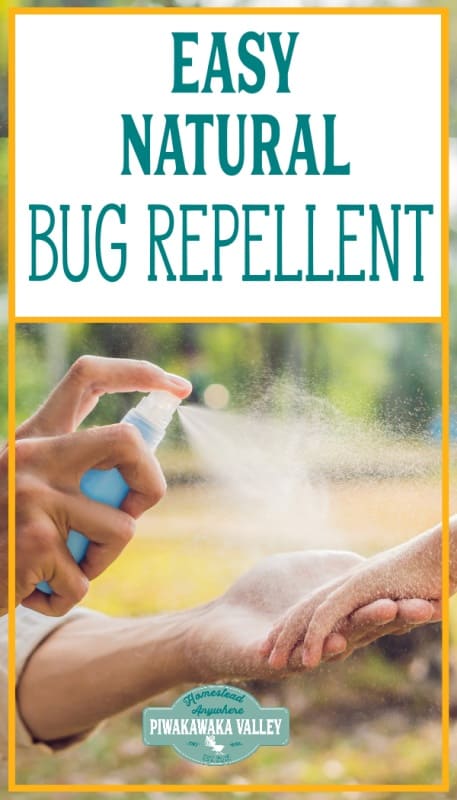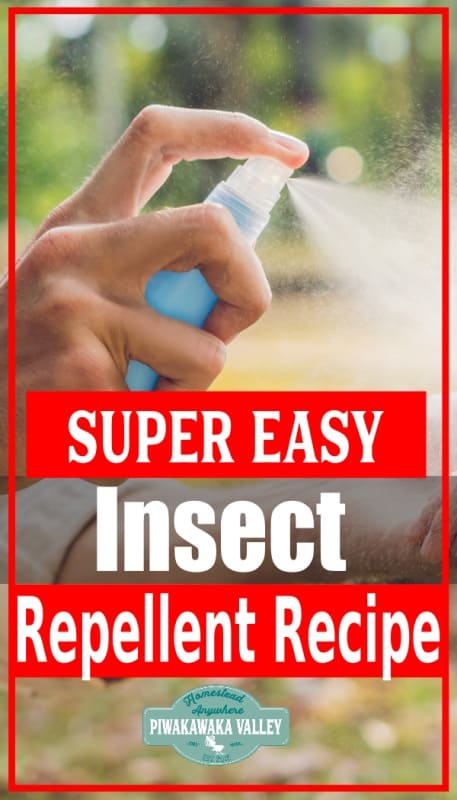This post was most recently updated on June 1st, 2021
I love living near the beach. Unfortunately, with the beach comes sandflies and I am one of those that reacts badly to sandfly bites! This means I was very quickly on the hunt for a totally natural and effective sandfly repellent. After a few tries I came up with this easy DIY insect repellent that really works.
Please read: This information is provided for educational purposes only and is not intended to treat, diagnose or prevent any disease. We encourage you to make your own health care decisions in partnership with a qualified health care professional.
This post contains affiliate links, this means at no extra cost to you, we make a commission from sales. Please read our Disclosure Statement
If you are wondering how to stop biting flies at the beach, then read on, this mixture is just what you are looking for!
What are Sandflies (or sand flies)?
According to Wikipedia:
“Sandfly (or sand fly) is a colloquial name for any species or genus of flying, biting, blood-sucking dipteran (fly) encountered in sandy areas. In the United States, sandfly may refer to certain horse flies that are also known as “greenheads” (family Tabanidae), or to members of the family Ceratopogonidae. Outside the United States, sandfly may refer to members of the subfamily Phlebotominae within the Psychodidae. Biting midges (Ceratopogonidae) are sometimes called sandflies or no-see-ums (no-see-em, noseeum). New Zealand sandflies are in the genus Austrosimulium, a type of black fly.”
Here we pretty much call all little biting black flies “sand flies” and I seem to react to their bites by swelling up and being very sore where they bit me.
They breed where there is standing fresh water, and with many animal troughs and puddles around, this is an ongoing issue here!
Why not use commercial insect repellent?
There are some effective bug repellent sprays for sure. But my issues with them are
- I didn’t have any and we live far away from town
- The chemicals in many of them have been shown to be toxic in some circumstances and I prefer natural options if I can find them.
DEET is present in many commercial insect repellents and has mixed results when it comes to safety. So I prefer to stick to things that I have made myself.
Essential oils for sandflies
There are many essential oils that act as a natural sandfly repellent. You can choose to use several oils together, or to use just one.
You can make your natural insect repellent with a few different formulations. These repellents involve diluting essential oils that the insects find distasteful or that confuse them. The oils don’t mix with water, so you’ll need to add them to other oils or to alcohol.
For a quick and simple natural bug spray, I find that citronella oil by itself works the best. Combined with some other oils you can make an effective repellent that works for a wider range of bugs.
- Cinnamon oil (mosquitoes)
- Lemon eucalyptus or regular eucalyptus oil (mosquitoes, ticks, and lice)
- Citronella oil (mosquitoes and biting flies)
- Castor oil (mosquitoes)
- Orange oil (fleas)
- Rose geranium (ticks and lice)
- Peppermint oil (most insects)
- Rosemary oil (most insects)
Generally you will want to use a total of 20 drops of oil to 2 Tablespoons of carrier oil.
Safe carrier liquids include:
- Olive oil
- Sunflower oil
- Mineral oil / ‘baby’ oil
- Any other cooking oil
- Witch hazel
- Vodka
If you really want to know how to use natural remedies in your everyday life – my friends at the Herbal Academy have a wonderful, affordable beginners course that you really should check out here.
Safety of essential oils
There is a misconception that natural = safe. This is not entirely true, some natural things are extremely dangerous, and you need to be aware of what you are doing with essential oils.
There is a reason why we dilute the essential oils with a carrier oil, and it is not just because it makes the oils go further and saves money.
Undiluted essential oils can cause skin irritation and some can even burn if put undiluted on to sensitive skin. If you are applying this to children, you should double the carrier oil volume to lower the strength of the oils.
If you are pregnant or nursing, do not apply an insect repellent, natural or otherwise, until after you’ve cleared it with your physician.
Totally Natural, Effective Sandfly Repellent Recipe
This is my very easy recipe. I use olive oil as a carrier oil simply because it is cheap and I have it in my cupboard all the time. Olive oil is also quite thick (as far as liquids go) so I find it lasts well on my skin and doesn’t drip all over the place while I am working outside.
You can change the carrier oil to something that you have or prefer. I know that some people use ‘baby oil’ as it is less greasy, almond oil also absorbs quickly to your skin.
If you prefer, you can use an isopropyl alcohol and mix the essential oils in to that instead, however, I don’t like the smell of it, and it is hard to find here.
Ingredients:
1 tsp of Citronella oil
1/2 cup of Olive oil (or other carrier oil of your choice)
Simply mix these two together and store in a pump bottle.
Usage:
To use apply 1-2 pumps of oil to each limb and rub in well. Reapply every 2-3 hours as required.
It is best to patch test a small area of skin before rubbing it all over yourself and leave it for an hour to check to any sign of reaction.
Storage:
Store in a closed container (or pump bottle) in a cool dark place to preserve the effectiveness of the essential oils. Olive oil stored in the fridge will set-up so it is best kept in a cool cupboard rather than the fridge.
Other options:
If you would rather have a spray bottle, you will need to add water and alcohol instead of a thick oil. I would suggest 1/3 cup of water and 1/8 cup of alcohol to help disperse the essential oil. Shake well before use.
You could use this to spray on the coats of animals that are being pestered by flies as well.
Natural mosquito repellent recipe
If you are having issues with mosquitos as well as sandflies, or you want a more generic bug repellent option I mix up the following mixture. Again, if you prefer it to be a spray rather than an oil then you would want to swap out the carrier for a liquid/alcohol mix.
Ingredients:
You will need 20 drops (1 ml) of each
1/2 cup of Olive oil (or other carrier oil of your choice)
or 1/3 cup of water and 1/8 cup of alcohol if you prefer a spray.
Simply add to your pump or spray bottle and shake well.
Usage:
To use apply 1-2 pumps of oil to each limb and rub in well. Reapply every 2-3 hours as required.
It is best to patch test a small area of skin before rubbing it all over yourself and leave it for an hour to check to any sign of reaction.
Homemade bug spray without essential oils
There are some times that essential oils may not be your thing, or you cannot get them. I grew up with an effective bug off mixture it was made up of 2 parts baby oil (mineral oil) and 1 part Dettol (known as Lysol in the USA).
You need to use the original brown Dettol/Lysol as it seems to be the strong aroma that helps confuse the bugs and keep them away.
The baby oil helps to thicken the mixture and prolong how long it lasts on your skin.
Other options to repel insects
Sometimes you are caught short with no supplies to make a repellent. If you have some plants in the herb garden, chances are there is something there that you can use!
- Rub lavender flowers or lavender oil on your skin, especially on hot parts of body (neck, underarms, behind ears, etc.) to repel insects.
- Rub fresh or dried leaves of anything in the mint family all over skin to repel insects (peppermint, spearmint, catnip, pennyroyal, etc. or citronella, lemongrass, etc.).
- Basil is also said to repel mosquitoes
If you really want to know how to use natural remedies in your everyday life – my friends at the Herbal Academy have a wonderful, affordable beginners course that you really should check out here.
Store-Bought Natural Insect Repellent
If you don’t have the time or the ability (or inclination) to make your own insect repellent, there are some natural ones that you can buy on the market.
If you are trying a new-to-you product, always do a skin patch test on everyone in the family that will be using it to test for reactions before you venture out among the biting critters.
All Terrain Herbal Armor Natural Insect Repellent
Badger – Anti-Bug Shake & Spray





